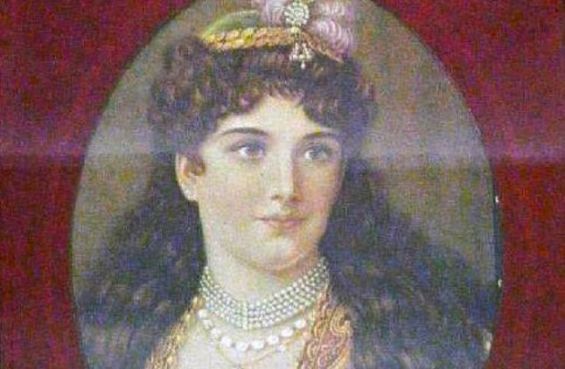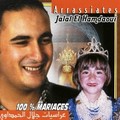Too much love can kill you, is a title of a song written by British guitarist Brian May of Queen, Frank Musker and Elizabeth Lamers that matches the tragic end of a Moroccan love story. And as the West had its Romeo and Juliette and the East its Layla and Majnun, the North African Kingdom witnessed the story of Sol Hachuel, aka Lalla Suleika and her alleged beloved.
The 19th century in North Africa was marked by this empowering yet sad account that ended the life of a charming Jewish young woman, and love is to be blamed. Lalla Suleika’s life, alleged love story and tragic death have indeed attracted so much attention at the time.
The young teenager, born in 1817 to a Jewish family living in Tangier, has inspired the Spanish writer, Eugenio Maria Romero who wrote a Roman a clef book, interviewing her father, mother and brothers. She was also the star of artist Alfred Dehodencq's painting known as «Execution of a Moroccan Jewess (Sol Hachuel)» (1860).
A forbidden love
Suleika’s story had two versions to it, in fact, one that is narrated by Muslims and another one that is cherished by the Jews. However, the two accounts agree on one thing, which is her tragic execution. It all started for the beautiful lady when she was a teenager. Her beauty has made everyone in the neighborhood attracted to her and because of her faith, marrying her was nearly impossible.
In the account provided by Hatchwell, a blog dedicated to connect the extended family of Suleika Hatchouel, it is mentioned that she got herself in trouble because of love.
«A boy from one of the wealthiest neighboring Muslim families espied Solica and desired to marry her. Solica’s family knew that in order for the marriage to a Muslim to occur, the young woman would have to abandon her faith. The young man’s father threatened that Solica’s family would suffer bitterly if they did not allow her to convert to Islam and to marry his son».
The same source points out at another version of the story insisting that her «perilous beauty caught the unwanted attention of the Pasha, the highest authority in Tangiers». To put it in other words, the Pasha was enchanted by Suleika and promised to marry her if she converted to Islam.
The plot
In a different book entitled «Sephardin : The Jews from Spain» (1992) and written by Spanish writer Paloma Diaz-Mas, more details were given regarding Suleika's love life and execution.
«The reasons are not entirely clear, but it seems that a young Muslim who was in love with Sol and a neighbor woman, also Muslim, were involved», wrote the scholar referring to Tahra de Mesoodi, a young girl who lived next to Suleika in Tangier and quickly befriended her. The latter was also mentioned in Romero’s book.
According to Diaz-Mas, Tahra and the Muslim man in love with Jewish Sol tried to convince her into converting to Islam. «When she refused (Sol), they denounced her to the governor, who had her executed», narrates the same book.
In fact, all historical and even fictitious novels based on the Sol’s story agree on the fact that she refused to abandon her faith. Sol was betrayed by her friend and trapped after rumors spread in the city, insisting that she converted to Islam. When the Pasha, as above-mentioned, knew about that he ordered to see Suleika who, unbeknown to her, denied her conversion stating that she would never leave Judaism.
The execution
She then was executed for apostasy of Islam as confirmed by Issachar Ben-Ami in his book «Saint Veneration Among the Jews in Morocco» (1998).
«All versions agree on the fact that, even under pressure from her parents, the King, his son, and the rabbie, the saint (Suleika) refused to repudiate Judaism preferring to die rather than give up her religion».
Indeed, Sol’s supposed love affair and her conversion became so important that it led her to Fez, where she was executed. Historical accounts suggest that the Jewish girl was sentenced to death after she preferred death over changing her faith. According to Hatchwell.net she told her executor «do not make me linger, behead me at once, for dying as I do, innocent of any crime, the God of Abraham will avenge my death».
In a very dramatic scene, Sol was decapitated when she was 17 years old in a public square in Fez. Describing the situation, Romero wrote : «with all his equipment, the executioner began his disgusting task. He abruptly parted the girl’s magnificent raven colored braids».
«With the well-sharpened knife, he made the first cut to the martyr’s neck. Solica, with her body bloodied from her wound, raised her eyes heavenward and muttered : Hear O Israel, Adonai our God, Adonai Unico. The right hand of the executioner separated the head from the trunk, which fell to earth in a pool of blood».
 Other sources continue explaining that Sol’s body was later purchased by a Jewish family and given a proper burial. Suleika, Solica or Lalla Suleika’s grave is now a pilgrimage in the Jewish cemetery in Fez that is visited both by the Jewish and Muslim community in Morocco. She is regarded as a martyr who died to stay true to herself and her religion.
Other sources continue explaining that Sol’s body was later purchased by a Jewish family and given a proper burial. Suleika, Solica or Lalla Suleika’s grave is now a pilgrimage in the Jewish cemetery in Fez that is visited both by the Jewish and Muslim community in Morocco. She is regarded as a martyr who died to stay true to herself and her religion.




 chargement...
chargement...












